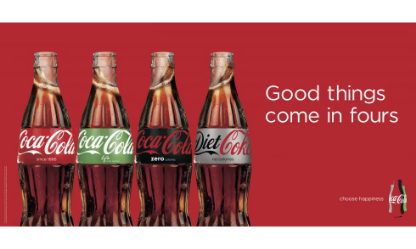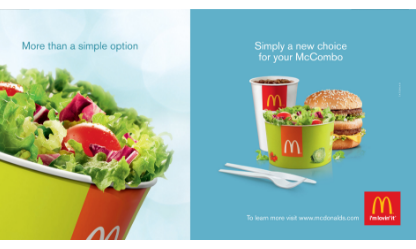Some lunatic with crazy hair — you might know him as Einstein — said:
“Insanity is doing the same thing over and over and expecting different results.”
The same applies to your branding strategy.
Where most businesses fail is in the rigidity of their brand strategy. With markets, customer preferences, and technologies continually changing, your strategy must be fluid and able to evolve and adapt to the change around you.
In today’s hypercompetitive business landscape, the ability of a business to embrace brand adaptation has become one of the most crucial drivers of a company’s success. By including it in your brand growth strategy, you’ll continually be able to set yourself apart from the competition while attracting and retaining loyal customers.
At Farinella, we know the crucial role brand adaptation can play in a successful business. With over 30 years of experience bringing new brands to life, brands’ ability to adapt has seen them thrive in all types of economies.
This article explores the importance of adapting your brand strategy and how successful businesses have done it.
The role of a brand strategy
Essential for building brand loyalty and driving growth, a brand strategy is a plan or framework that outlines how you will develop and promote your brand to specific target markets and achieve your key business goals.
A brand strategy requires a deep understanding of your target markets, competitors, and market trends and involves defining your brand’s purpose, values, personality, and unique selling proposition.
A well-defined brand strategy is essential for establishing a strong brand identity, building brand loyalty, and achieving business goals.
What is brand adaptation?
Brand adaptation refers to modifying or adjusting a brand’s identity, messaging, or visual elements to better align with a specific market or audience. This is particularly important for companies operating in global or diverse markets, where cultural differences can significantly impact how a brand is perceived.
Brand adaptation may involve changing the brand name, logo, colors, or tagline to make it more relevant and appealing to the target audience. Successful brand adaptation requires a deep understanding of the target audience and their cultural context and a flexible and agile approach to branding that can adapt to changing market conditions.
Established local brands or those that fail to speak to a new market often rely on brand adaptation to enhance their relevance to new and existing customers – sometimes from a global and local branding perspective.
Why brand adaptation is essential to brand growth strategy
Well, your business depends on it, buddy. Sorry to be so blunt.
Brand creators and marketers must develop looks, messages, and approaches to help companies grow, whether they’re expanding their reach, launching new products, or growing into new markets.
Flexibility is the way. (Apologies to our friends watching The Mandalorian.)
When brand adaptation is a cornerstone of brand growth strategy, a company can connect with new customers in new areas. Plus, customer loyalty deepens as a brand grows with its customers.
Challenges that require brand adaptation
To engage with consumers effectively, brands must tailor their messaging to specific target markets. So, small and medium-sized businesses often need to narrow their target audience to focus on a demographically homogeneous group of local customers.
However, when expanding to serve a larger market, brands may find that their carefully cultivated image does not appeal to a more diverse and multicultural audience. That’s where brand adaptation comes in.
By adjusting their brand’s identity, messaging, or visual elements, they can better align with the cultural and linguistic nuances of a specific market or audience. Successful brand adaptation requires a deep understanding of the target audience, your existing customers, and their cultural context and a flexible approach to branding that can adapt to changing market conditions.
The power of brand adaptation in your marketing strategy
When times get tough economically, it’s common for businesses to suddenly focus on ways to survive when adaptation can help you thrive.
Companies that are getting ahead are the ones that have been flexible and agile, changing their approaches as consumers’ views of their brand’s change.
Famous brands that have successfully adapted
When times get tough economically, it’s common for businesses to suddenly focus on ways to survive when adaptation can help you thrive. Companies that are getting ahead are the ones that have been flexible and agile, changing their approaches as consumers’ views of their brand’s change.

Airbnb’s Hyper-Targeted Branding for Diverse Audiences
The pioneering hospitality platform, Airbnb, built its brand empire by moving away from a shotgun messaging approach and instead creating hyper-targeted brand campaigns and messaging that spoke to the individual needs of different audiences – resulting in a diverse and inclusive brand appeal.
For families, the focus is on comfort and convenience, providing your home away from home. For adventure seekers, it’s about evoking a sense of excitement and exploration by highlighting unique and off-the-beaten-path experiences. For business travelers, they emphasize flexibility and productivity, positioning them as a better alternative to traditional hotels. This tailored approach also extends to diverse cultures and regions, with Airbnb adapting their branding to reflect local customs and traditions.

Coca-Cola’s Transition into the Health-Conscious Market
Big brand beverage company Coke has always blazed a trail when it comes to their brand positioning and they were one of the first brands to successfully respond to changing consumer tastes.
With a big shift from consumers towards healthier food and drinks, Coke successfully adapted its brand to target health by strategically embracing a more inclusive and diversified approach. Recognizing the growing consumer demand for healthier choices, Coke expanded their product portfolio by introducing a range of low-sugar and sugar-free alternatives to its classic offerings.
They also placed a greater emphasis on transparency, highlighting nutritional information and actively engaging in campaigns promoting balanced lifestyles. Through these strategic adjustments, Coke has demonstrated their ability to adapt and resonate with consumers seeking healthier options, fostering a positive brand image and enhancing their market position in the health-conscious landscape.

McDonald’s Innovative Menu Diversification for Health-Conscious Consumers
Global fast-food giant McDonald’s is another brand that has effectively responded to changing consumer preferences. Recognizing the growing demand for healthier food options, McDonald’s expanded their menu to include salads, grilled chicken sandwiches, fruit cups, and other nutritious alternatives alongside their standard menu offerings.
By doing so, they tapped into a broader market segment concerned about health and wellness while staying true to their brand identity as a leader in convenient, fast food options for all.
An agency well-versed in brand adaptation
Here at Farinella, a brand is more than a logo with a bunch of colors floating around. To us, a brand is a clear and cohesive framework designed to inspire trust and value from customers, employees, and the marketplace. Most importantly, it’s flexible and agile, able to adapt to changing markets.
With our client-first approach, we have over 30 years of experience delivering branding, advertising, communications, digital, and social media work that inspires connection and drives business. If you need help adapting your brand, we’re here for you.
How do I get started?
Contact us! We’ll walk you through every step, work hand in hand with you, and produce materials that will raise awareness, express expertise, convince, and connect.
